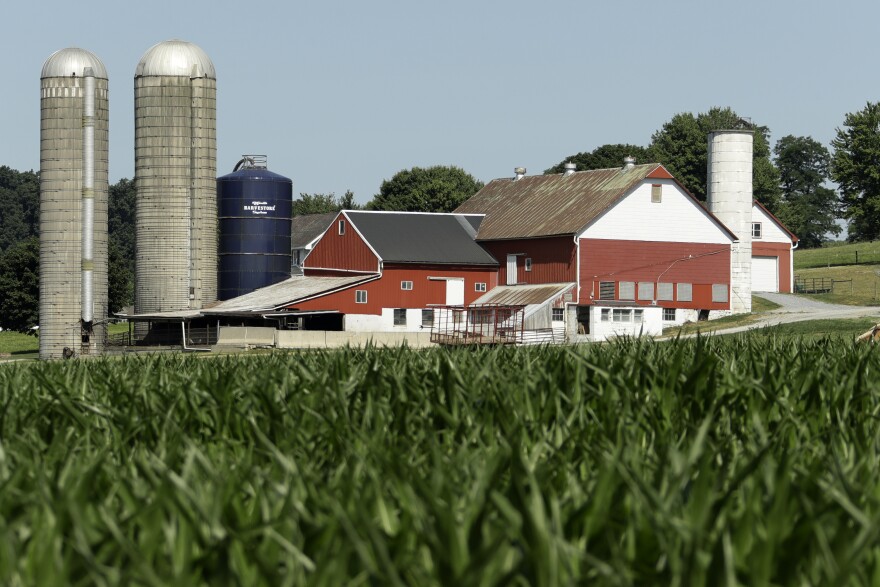BETHLEHEM, Pa. — Pennsylvania has lost jobs in crop and forestry processing, and there are intra-state supply chain gaps, but its gross product growth in food and alcohol processing is growing.
A report released last week by a Harrisburg-based nonprofit spotlights a decade’s worth of changes to Pennsylvania’s agriculture sector.
“This is a springboard for a deeper dive into the trends, challenges and opportunities that will inform our economic development strategy in the coming months and years.”State Agriculture Secretary Russell Redding in a news release.
“This study gives us critical information we need as state government to make sure we are investing in where we are going in Pennsylvania agriculture, not in where we’ve been,” state Agriculture Secretary Russell Redding said in a news release.
“This is a springboard for a deeper dive into the trends, challenges and opportunities that will inform our economic development strategy in the coming months and years.”
Team Pennsylvania, alongside state agriculture officials, on March 18, National Agriculture Day, released “The Pennsylvania Agriculture Economic Analysis 2025.”
Funded in part by a competitive research grant from the state Department of Agriculture, the report takes a deep data dive into the commonwealth’s agriculture sector from 2012-2022.
While data specific to the Lehigh Valley was not available, officials said they hope the report is a starting point for local conversations.
“Each element of the things that make the Lehigh Valley’s agriculture culture, if you will, rich and growing and thriving, show up in this study in some way or another,” Kelly Kundratic, Team Pennsylvania’s agriculture policy director, said in a Wednesday phone interview.
“And, hopefully, the data can help leaders on the ground kind of understand in a broader context how their region is impacting the whole state's trajectory.”
'Agriculture really reflects everything"
The more than 70-page report is organized into three parts: economic base and industry, state comparison and supply chain, each with its own analysis.
From 2012 to 2022, the state’s agriculture sector experienced a 3% increase in jobs, adding 9,116 positions, the economic base and industry analysis showed.
That growth lagged behind the total state economy, which saw an 8% increase.
“One of the biggest takeaways that broadly people should understand is that this industry, number one, is really important across the entirety of the state,” said Lisa Riggs, Team Pennsylvania's senior managing director for economic growth strategy and partnerships.
Early on in the report, researchers deconstruct what agriculture can mean.
“I think, for a lot of folks, they might quickly envision farms as agriculture, but what you see in the report is we define early on, there's a chart that goes broadly, the sector, and then there's subsectors and clusters,” Riggs said.
"This analysis shows how agriculture really reflects everything from on-farm through processing that comes off of the farm into food and beverage manufacturing.
“And, we really want to underscore that that is an extraordinary system within the commonwealth.
"And then we also want to deconstruct it a little bit to say that, as we think about agriculture, we can't think about it as one simple term, that there's a lot of different levels of detail, and some clusters are doing better than others.”
Different 'clusters'
Eight different “clusters” were identified and categorized as either agriculture subsector or agriculture-related manufacturing subsector.
The former includes crop and animal production, forestry and food processing, alcohol processing and manufacturing and landscaping.
The latter includes forest product manufacturing and food and beverage manufacturing.
“Despite flat employment, Pennsylvania’s gross state product [GSP] grew by 39% in real terms during the same period, reaching $11.8 billion in 2022,” according to the report.
“The [agriculture] subsector accounts for 2.1% of Pennsylvania’s jobs and 1.3% of its GSP.”
The agriculture-related manufacturing subsector saw employment grow 8% from 2012-22, data shows.
Food and beverage manufacturing added more 6,800 jobs, and forest product manufacturing added more than 2,300.
State comparison, supply chain
For the state comparison analysis, researchers looked at the commonwealth alongside Ohio, New York and Virginia.
While Pennsylvania’s agriculture sector grew 22.4% from 2021 to 2022, Ohio’s grew 38.1%. However, during that same time period, New York and Virginia’s only grew 13.7% and 0.2%, respectively.
“Pennsylvania Agriculture is a complex and critical component of our economy, and this report reaffirms Pennsylvania’s leadership in the sector while providing insights to ensure continued growth.”Team Pennsylvania Presidents Abby Smith
The analysis also found Pennsylvania’s alcohol processing and manufacturing stands out as a high-growth sector, with an 84.5% increase in real gross state product from 2012 to 2022.
“This exceptional growth far exceeds that of Ohio (22.5%) and contrasts sharply with declines in New York (-12.1%) and Virginia (-17.8%), positioning Pennsylvania as a regional leader in this industry,” according to the report.
While researchers found the commonwealth “demonstrates significant strengths in local supply chains,” there are several “critical inputs” sourced predominantly by out-of-state suppliers, such as fertilizers, grains and containers.
“Pennsylvania Agriculture is a complex and critical component of our economy, and this report reaffirms Pennsylvania’s leadership in the sector while providing insights to ensure continued growth,” Team Pennsylvania President Abby Smith said.
“As the state’s nonpartisan nonprofit dedicated to accelerating economic growth, Team Pennsylvania is committed to transforming these insights into action through public-private collaboration.”
Team Pennsylvania is slated to hold a series of public webinars on the report. The first is scheduled for noon April 16. Registration is required.


